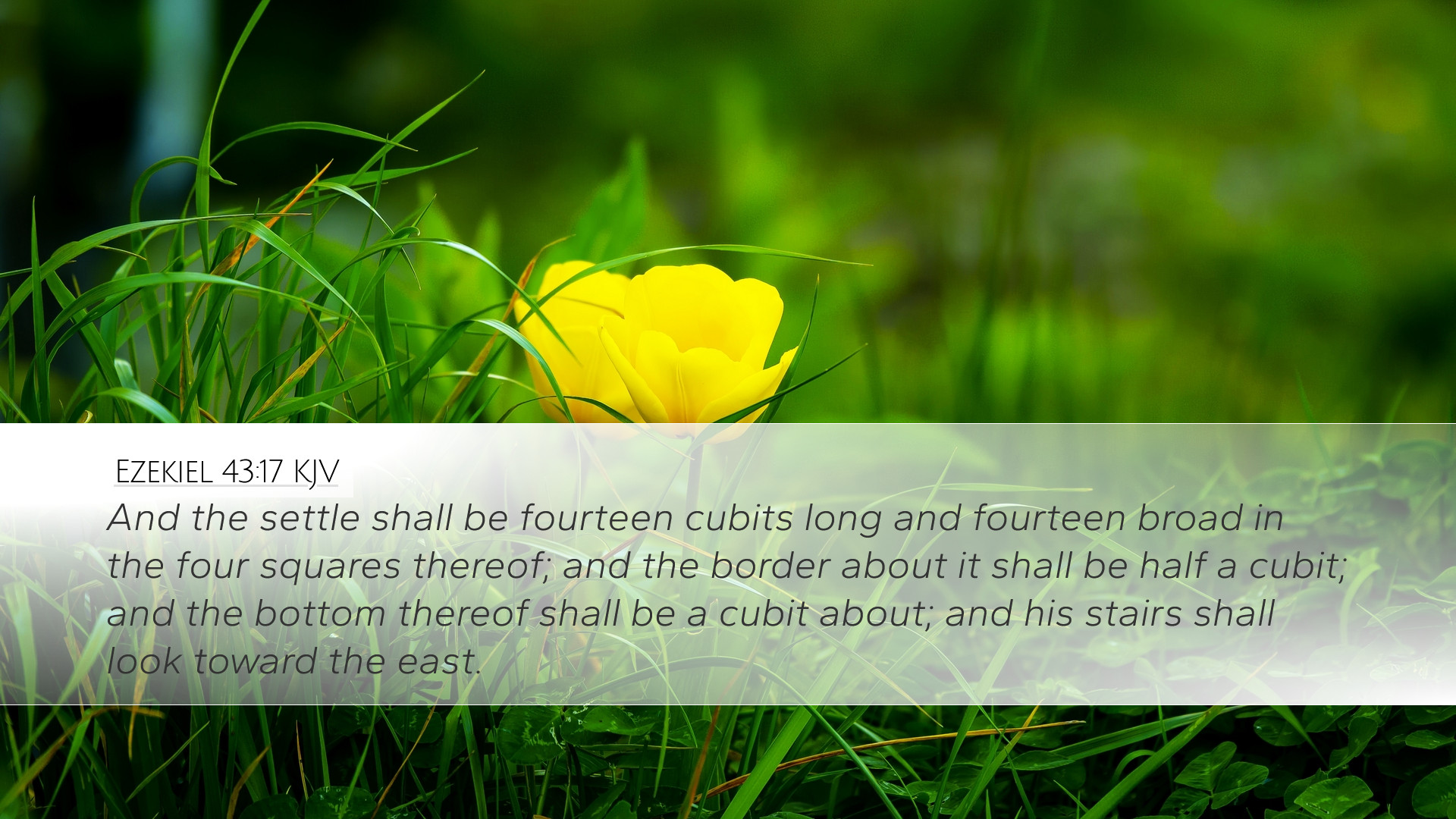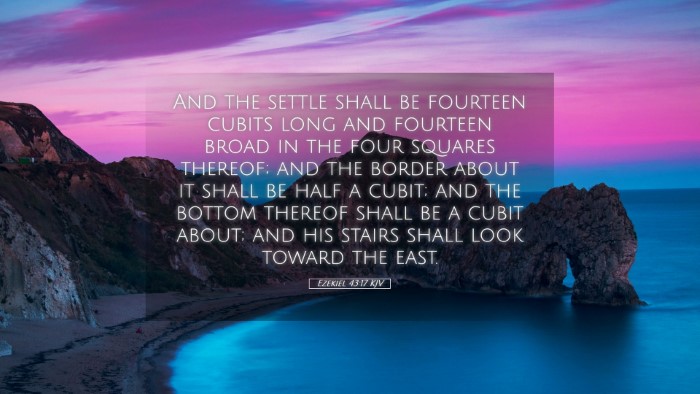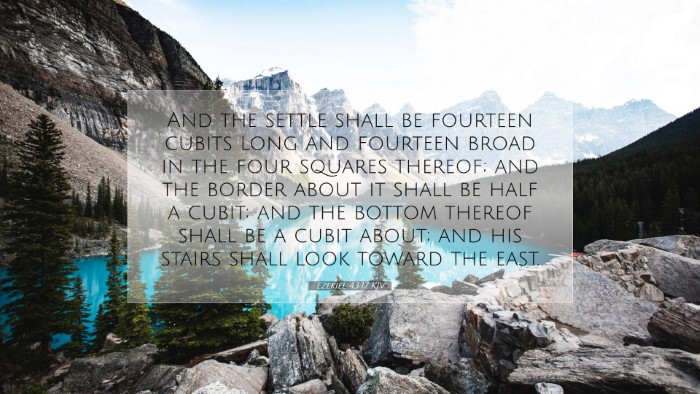Commentary on Ezekiel 43:17
Ezekiel 43:17: "And the settle shall be fourteen cubits long and fourteen cubits broad in the four squares thereof; and the border about it shall be half a cubit; and the bottom thereof shall be a cubit about; and his stairs shall look toward the east."
Introduction
This verse belongs to the broader context of Ezekiel's vision of the new temple and the re-establishment of worship in Israel. It provides significant details concerning the dimensions and measurements of the altar within the temple, serving not just a structural purpose but also reflecting deeper theological meanings.
The Significance of Measurements
The detailed specifications provided by Ezekiel serve a dual purpose. Firstly, they emphasize the importance of divine order and precision in worship. Matthew Henry notes that such exactness highlights God’s desire for reverence and meticulousness in His service. The temple is not merely a place but a central point where divine holiness meets human worship.
Albert Barnes emphasizes that the specific measurements reflect God’s architectural blueprint for how He desires to commune with His people. This mirrors the perfection of the heavenly realms and showcases the reverence expected in approaching God.
Interpretation of the Altar's Dimensions
The measurements—fourteen cubits on each side with a border of half a cubit—suggest a square altar. Adam Clarke highlights that the square shape indicates stability and completeness, principles which are inherent in God’s nature and his covenant with Israel.
Furthermore, the concept of fourteen cubits can symbolize the double completeness, possibly reflecting the Hebrew use of numbers to convey theological truths. As Clarke points out, the fullness and sufficiency of God are intertwined with the people’s worship, demanding not only their physical presence but also their spiritual offerings.
The Border and Stairs
The half cubit border may symbolize separation, indicating that while God desires to draw near to His people, there must be a recognition of the holiness of God. Henry notes that this border serves as a reminder of the sacred boundary between the divine and human.
The emphasis on the stairs that "look toward the east" indicates a direction toward the rising sun, often symbolizing hope and renewed life within biblical terminology. Barnes emphasizes that the eastern orientation of the temple signifies the anticipation of God’s glory manifesting anew—a point linking to the eschatological hope found in Christian theology.
The Role of the Altar in Worship
In the context of worship, the altar was the place of sacrifice, embodying the principle of atonement. Clarke brings attention to the altar’s role as a site where sin is dealt with and fellowship with God is restored. This foundational aspect calls to mind the symbolism of Christ, who is our ultimate altar and sacrifice.
Each element—from the measurements to the orientation—reflects the overarching narrative of redemption. The precision of the dimensions suggests a meticulously planned redemption narrative that invites careful consideration from pastors and scholars alike.
Theological Implications
- Holiness: The altar’s dimensions underscore God’s holiness and the seriousness with which He regards worship.
- Divine Order: The specificity of the measurement underscores the importance of divine order in our relationship with God.
- Foreshadowing of Christ: The altar foreshadows the ultimate sacrifice in Christ, presenting a type that Christians can easily identify.
- Hope and Restoration: The eastward orientation signals not just a physical direction but also a spiritual truth about looking toward new beginnings and promises.
Conclusion
In Ezekiel 43:17, we witness a profound intersection of faith, theology, and divine architecture. The insights offered by public domain commentaries enrich our understanding of this verse and its place within the larger narrative of Scripture. For pastors, students, and theologians, this passage invites careful reflection on the nature of worship, the holiness of God, and the anticipation of ultimate redemption. The altar, with its detailed construction, continues to beckon us to approach the presence of God with reverence and awe.


